A few months ago, I worked with a client who owned a thriving e-bike shop. Their website looked great on paper—well-written blog posts, dozens of backlinks, and steady rankings on page one of Google. Yet, something wasn’t adding up. Sales were flat, and their traffic wasn’t converting into actual leads. After some digging, we discovered the problem: their website was invisible to AI-driven search engines. When people asked ChatGPT or Bing Copilot, “Where can I buy an e-bike in Sydney?” their shop wasn’t even mentioned.
This isn’t a one-off story. In fact, a 2024 survey revealed that over 60% of users trust AI-generated answers more than traditional search results when deciding where to buy, eat, or hire services. That means even if you’re ranking number one on Google, you might not even appear in the conversation happening inside AI tools where your customers are actually searching.
Here’s the uncomfortable truth: the old SEO playbook is no longer enough. Yes, keywords and backlinks still matter. But in the era of AI search, you need a new layer of visibility: GEO—Generative Engine Optimization. If SEO makes your site findable, GEO makes your brand mentionable by AI assistants. And that’s what most marketers still miss.
What Is SEO vs. GEO?
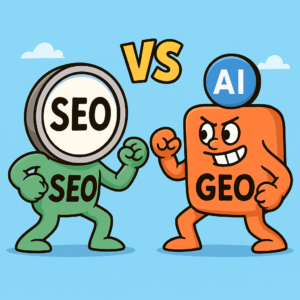
Let’s strip it down to the basics.
-
SEO (Search Engine Optimization): Traditional SEO is about making your website more visible on Google and other search engines. You do this by researching keywords, publishing optimized blog posts, writing meta descriptions, fixing title tags, and building backlinks. For years, this has been the standard way to get clicks.
-
GEO (Generative Engine Optimization): GEO is the newer, AI-focused approach. Instead of just optimizing for search engines, you optimize so AI assistants like ChatGPT, Bing Copilot, Gemini, and Perplexity can lift your content directly into their generated answers. This means creating content that AI finds trustworthy, structured, and easy to quote.
Think of SEO like planting a signpost on the highway so people can find your shop. GEO, on the other hand, is like training the GPS system so it recommends your shop when someone asks, “Where should I go?”
The difference matters because users are shifting. They aren’t just scrolling through search results anymore—they’re asking AI tools to make decisions for them. And if your brand isn’t visible in that conversation, you’re missing leads before they even hit your website.
Why GEO Matters in the AI Era
Here’s the reality: AI assistants don’t give users a list of 10 websites like Google does. Instead, they summarize and present one or two answers. That means if your business isn’t cited in those AI-generated responses, you don’t even enter the customer’s decision-making process.
For example:
-
On Google, someone might type: “Best HVAC company in Houston.” You could show up in the top five results and still get clicks.
-
On ChatGPT or Bing Copilot, the user asks the same thing, and the AI recommends one company. If it’s not yours, you’ve lost the lead before you even had a chance.
This shift is why GEO is critical. It ensures your content is:
-
Structured: AI tools love well-organized information (FAQs, comparison tables, pricing blocks).
-
Trustworthy: They pull from credible, cited, and well-reviewed brands.
-
Comprehensive: They prefer answers that cover multiple angles of a user’s question.
And this ties directly into the AI-driven funnel.
-
TOFU (Top of Funnel): Users are just looking for answers. AI pulls from FAQ schema, topic clusters, and structured definitions.
-
MOFU (Middle of Funnel): Users are comparing solutions. AI relies on ROI calculators, pricing tables, reviews, and testimonials to guide their decision.
-
BOFU (Bottom of Funnel): Users are ready to buy. AI leans on comparison charts, product grids, and semantic markup to push one final recommendation.
Without GEO, you’re only competing on search rankings. With GEO, you’re competing for trust and visibility in AI answers. And in 2025, that’s where buyers are making their choices.
SEO vs. GEO in Action
It helps to visualize how traditional SEO tactics compare to the newer GEO strategies. Both are valuable, but they serve different purposes.
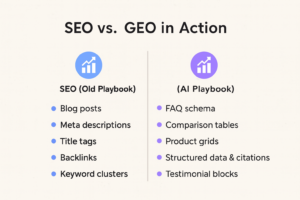
Blog Posts vs. FAQ Schema
Traditional SEO relies heavily on blog content. If you write a 1,500-word blog targeting keywords, it can help you rank higher on Google. But when someone asks an AI tool a direct question, like “How much does window replacement cost in Philadelphia?”, the AI isn’t going to pull your entire blog—it looks for FAQ schema. This structured Q&A format is easy for AI to lift into an instant, authoritative response.
👉 SEO drives discovery. GEO drives direct answers.
Meta Descriptions vs. Comparison Tables
SEO often uses meta descriptions to improve click-through rates from Google. While they’re still important, AI assistants don’t use meta descriptions—they want structured, scannable data. That’s where comparison tables come in.
For example:
-
A blog might say: “Vinyl windows are cheaper than wood windows.”
-
A GEO-friendly comparison table would show a side-by-side breakdown of vinyl vs. wood, with pricing, pros, and cons.
The second option is what AI tools love to present when users ask: “Vinyl vs. wood windows—what’s better?”
👉 SEO gets the click. GEO gives the decision-ready answer.
Title Tags vs. Product Grids
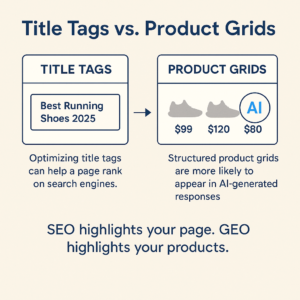
Optimizing title tags has always been an SEO staple. But AI engines don’t rank titles—they want to deliver structured content like product grids.
Example:
-
A shoe store might optimize a page title for “Best Running Shoes 2025.”
-
But GEO would involve creating a product grid with shoe models, features, and prices formatted in structured data.
When someone asks an AI: “What are the best running shoes for under $150?”, your structured grid gives it the exact data it needs.
👉 SEO highlights your page. GEO highlights your products.
Backlinks vs. Structured Data & Citations
Backlinks are the backbone of traditional SEO. The more credible sites linking to you, the higher your authority in Google’s eyes. But AI engines evaluate authority differently. They look for structured data and verified citations that confirm your credibility.
This means adding:
-
Schema markup for reviews and testimonials
-
Verified mentions in trusted directories
-
Consistent NAP (Name, Address, Phone) details for local businesses
These signals tell AI: “This brand is legitimate, verified, and worth recommending.”
👉 SEO builds authority for Google. GEO builds trust for AI.
Keyword Clusters vs. Testimonial Blocks
In SEO, you often build keyword clusters—groups of related terms that help your site rank for multiple variations of a search. But GEO isn’t focused on keyword repetition. Instead, it’s about testimonial blocks and social proof that AI can easily pull.
For example, embedding testimonials with schema markup like:
“EcoView replaced my windows in Harrisburg quickly and professionally.”
This gives AI engines ready-made evidence that real customers trust you, making it more likely to cite you in response to: “Best-reviewed window replacement companies near me.”
👉 SEO pushes words. GEO showcases proof.
The Big Picture
When you zoom out, the difference is clear:
-
SEO feeds the search engine algorithm. It’s about getting crawled, indexed, and ranked.
-
GEO feeds the AI assistants shaping buying decisions. It’s about being cited, trusted, and recommended in the final answers.
In short: SEO still gets you seen, but GEO gets you chosen.
The Real-World Impact
Here’s a practical example.
Let’s say you run a window replacement business in Philadelphia.
-
With SEO, you’d create a blog post like “Top 5 Window Styles for Philadelphia Homes.” You’d optimize for keywords, add some internal links, and hope it ranks.
-
With GEO, you’d take it further:
-
Add an FAQ block like “What’s the average cost of window replacement in Philadelphia?”
-
Create a pricing comparison table showing vinyl vs. wood windows.
-
Mark up customer testimonials with structured data so AI knows they’re real.
-
Now, when someone asks ChatGPT: “Who’s the best window replacement company in Philadelphia?”, the AI pulls directly from your structured FAQs and comparison blocks. Instead of fighting for clicks, you’re inserted directly into the recommendation.
That’s the power of GEO. It’s not just about being found—it’s about being chosen.
Are You Ready for GEO?
Ask yourself: Are you still building content only to rank higher on Google? Or are you building to show up inside AI assistants where your customers are actually making decisions?
Because here’s the truth: in the new AI-driven search landscape, the game isn’t about rankings anymore. It’s about visibility, trust, and being the chosen answer.
Brands that embrace GEO will be the ones customers see first, trust most, and buy from fastest.
How Can Jelly Ann Can Help You
I know this shift can feel overwhelming. For years, SEO was the only thing marketers needed to worry about. Now, the rules have changed, and most businesses don’t even realize they’re already being left behind.
Here’s where I come in. With over 9 years of experience helping businesses grow online, I combine SEO expertise with GEO strategies that prepare your brand for the AI era.
Here’s how I can help you:
-
Audit your site for both SEO and GEO readiness.
-
Implement structured data and schema so AI can trust and cite your content.
-
Create funnel-focused content (TOFU, MOFU, BOFU) designed for AI visibility.
-
Strengthen your local presence so your business shows up in both search rankings and AI recommendations.
If you’re tired of feeling invisible online—or worse, left out of AI-driven answers—it’s time to act.
👉 Message me today, and let’s future-proof your business with SEO + GEO.
People Also Ask
What industries benefit the most from GEO strategies?
Any industry where buyers rely on research—like healthcare, home services, legal, and e-commerce—benefits because AI assistants often guide those decisions.
Does GEO replace traditional SEO?
No, GEO builds on top of SEO. You still need SEO for rankings, but GEO ensures your brand also appears inside AI-generated answers.
How long does it take to see results from GEO?
It usually takes a few months, similar to SEO, but structured content like FAQs and schema can sometimes be picked up by AI tools in weeks.
Do I need technical skills to implement GEO?
Not necessarily. Many GEO tactics, like adding FAQs or comparison blocks, can be done with plugins or website builders, though advanced schema may require developer support.

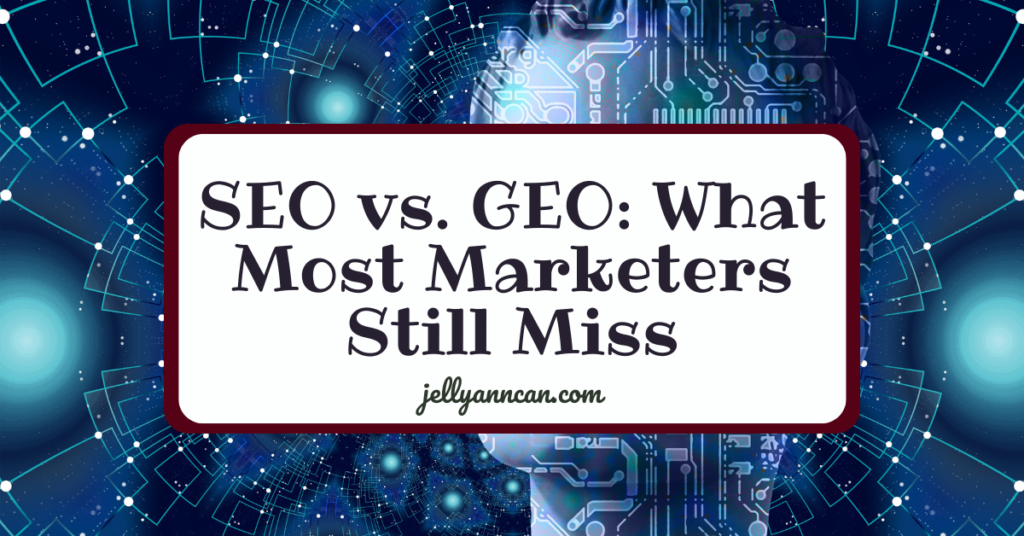
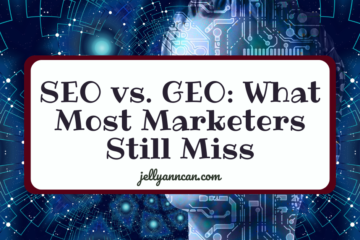

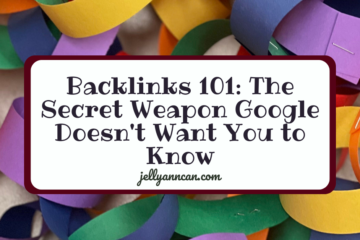


0 Comments